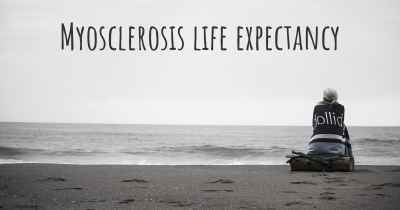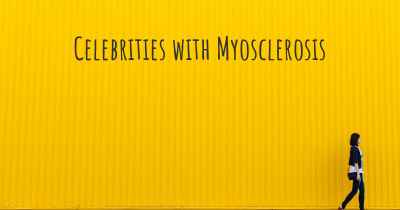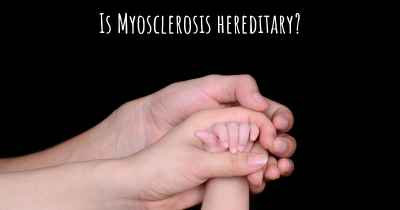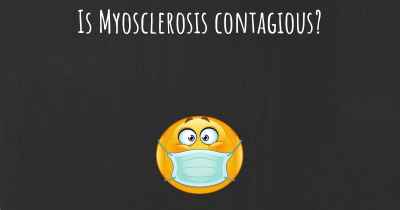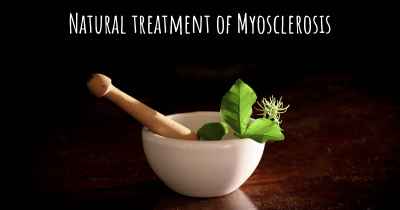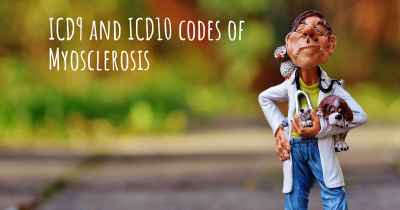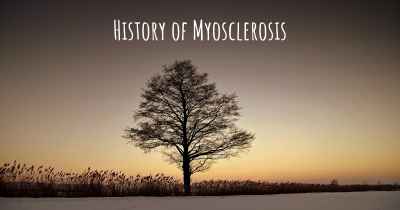Living with Myosclerosis. How to live with Myosclerosis?
Can you be happy living with Myosclerosis? What do you have to do to be happy with Myosclerosis? Living with Myosclerosis can be difficult, but you have to fight to try to be happy. Have a look at things that other people have done to be happy with Myosclerosis
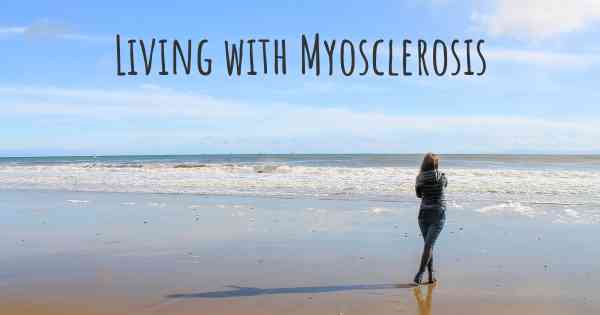
Living with Myosclerosis
Myosclerosis, also known as myositis ossificans, is a rare condition characterized by the formation of bone within muscle tissue. This can lead to pain, stiffness, and limited range of motion. While living with myosclerosis can present challenges, there are strategies and lifestyle adjustments that can help improve quality of life and manage symptoms.
1. Seek Medical Guidance
If you have been diagnosed with myosclerosis, it is crucial to work closely with your healthcare team, including doctors, physical therapists, and specialists. They can provide you with personalized advice, treatment options, and monitor your condition over time. Regular check-ups and open communication with your medical professionals are essential.
2. Manage Pain and Inflammation
Pain management is a key aspect of living with myosclerosis. Over-the-counter pain relievers, such as nonsteroidal anti-inflammatory drugs (NSAIDs), may help alleviate mild to moderate pain. However, it is important to consult your doctor before starting any medication regimen. They may prescribe stronger pain medications or recommend other therapies, such as heat or cold therapy, to help manage pain and reduce inflammation.
3. Physical Therapy and Exercise
Physical therapy plays a crucial role in managing myosclerosis. A physical therapist can design a personalized exercise program to help maintain muscle strength, flexibility, and range of motion. They may also teach you specific stretching techniques and provide guidance on proper body mechanics to prevent further injury or worsening of symptoms. Regular exercise, as recommended by your healthcare team, can help improve overall physical function and reduce the impact of myosclerosis on your daily life.
4. Assistive Devices and Adaptive Techniques
Depending on the severity of your myosclerosis, you may benefit from using assistive devices or adaptive techniques to perform daily activities. These can include mobility aids like canes or walkers, ergonomic tools to reduce strain on affected muscles, or modifications to your home or workplace environment. Occupational therapists can provide valuable guidance on how to adapt your surroundings and suggest appropriate assistive devices to enhance your independence and safety.
5. Emotional Support and Self-Care
Living with myosclerosis can be emotionally challenging. It is important to seek emotional support from loved ones, friends, or support groups who can provide understanding and empathy. Additionally, practicing self-care techniques, such as relaxation exercises, meditation, or engaging in hobbies and activities you enjoy, can help reduce stress and improve overall well-being.
6. Maintain a Healthy Lifestyle
Adopting a healthy lifestyle can have a positive impact on managing myosclerosis. This includes eating a balanced diet rich in nutrients, staying hydrated, and getting enough restful sleep. Regular physical activity, as recommended by your healthcare team, can help maintain muscle strength and flexibility. Avoiding smoking and excessive alcohol consumption is also important, as they can negatively affect overall health and potentially worsen symptoms.
7. Stay Informed and Educated
Continuously educating yourself about myosclerosis can empower you to make informed decisions about your health. Stay updated on the latest research, treatment options, and self-care techniques. Knowledge about your condition can help you communicate effectively with your healthcare team and actively participate in your own care.
Living with myosclerosis may present challenges, but with the right support, medical guidance, and lifestyle adjustments, it is possible to manage symptoms and improve quality of life. Remember, every individual's experience with myosclerosis is unique, so it is important to work closely with your healthcare team to develop a personalized approach to living with this condition.
